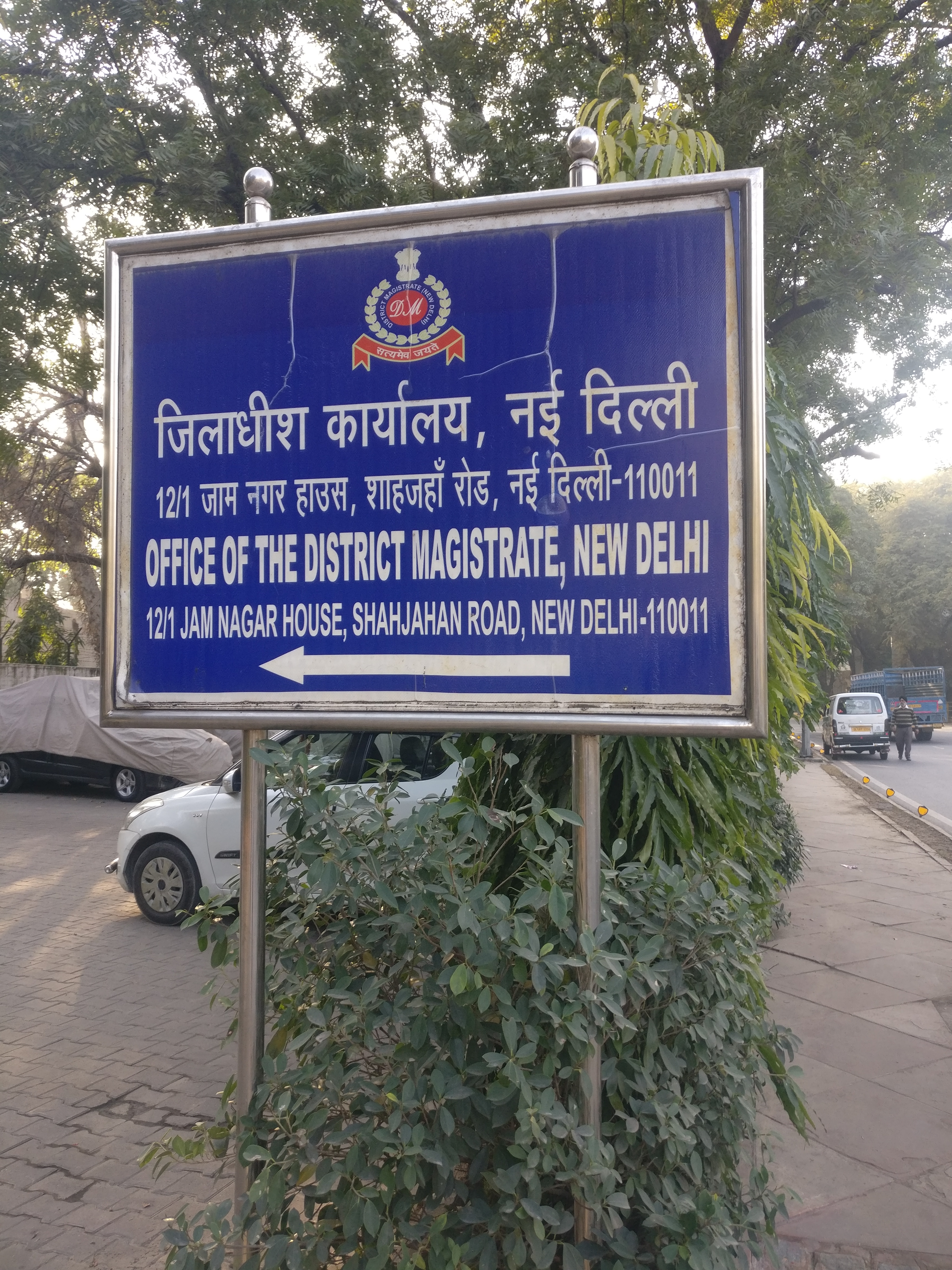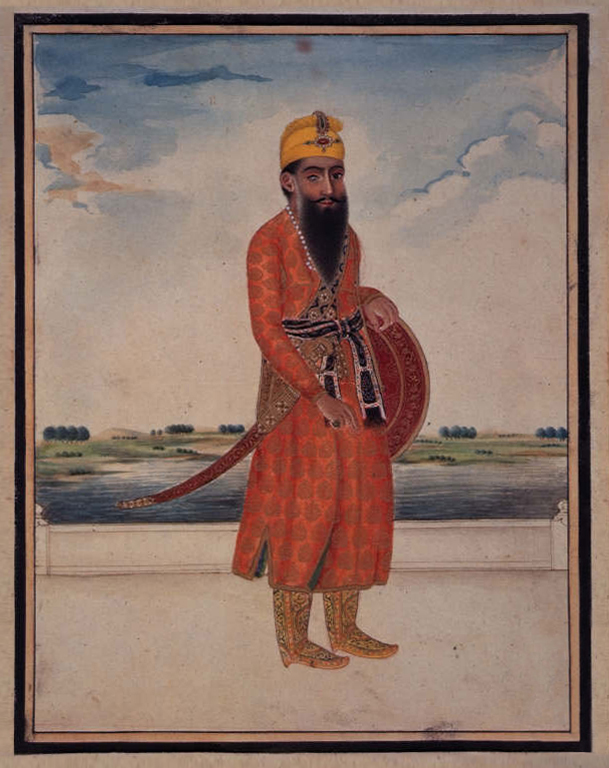|
Jandiala Guru
Jandiala Guru, commonly known as Jandiala, is a town in the Amritsar district of Punjab, India. It is located on the Grand Trunk Road, and has an altitude of 229 m (754 ft). History Jandiala Guru is named after Jand, the son of the founder. The municipality was created in 1867 during the colonial period of British rule and formed part of Amritsar Tehsil. The town was situated on the route of the North-Western Railway. The population according to the 1901 census was 7,750, and the revenue of the town in 1903-4 was Rs. 8,400, mainly from octroi taxes. At the turn of the 21st century the population was estimated at 100,000. Large communities are Ghangas (Jatts), Majhbi Sikh SC, Jains (mainly jewelers, grain Merchants, and businessmen), Malhotras (Khatri), Kamboj & Thatheras (utensil makers), and Christians. Large concentration of these skillful artisans make Jandiala Guru the hub for jewelry and utensils for the surrounding areas. Previously, it was surrounded by a ... [...More Info...] [...Related Items...] OR: [Wikipedia] [Google] [Baidu] |
States And Territories Of India
India is a federalism, federal union comprising 28 federated state, states and 8 union territory, union territories, for a total of 36 subnational entities. The states and union territories are further subdivided into 800 List of districts in India, districts and smaller administrative divisions of India, administrative divisions by the respective subnational government. The states of India are self-governing administrative divisions, each having a State governments of India, state government. The governing powers of the states are shared between the state government and the Government of India, union government. On the other hand, the union territories are directly governed by the union government. History 1876–1919 The British Raj was a very complex political entity consisting of various imperial divisions and states and territories of varying autonomy. At the time of its establishment in 1876, it was made up of 584 princely state, constituent states and the prov ... [...More Info...] [...Related Items...] OR: [Wikipedia] [Google] [Baidu] |
Octroi
Octroi (; , to grant, authorize; Lat. ''auctor'') is a local tax collected on various articles brought into a district for consumption. Antiquity The word itself is of French origin. Octroi taxes have a respectable antiquity, being known in Roman times as ''vectigalia''. These were either the ''portorium'', a tax on the entry from or departure to the provinces (those cities which were allowed to levy the ''portorium'' shared the profits with the public treasury); the or , a duty levied at the entrance to towns; or the ''edulia'', sales imposts levied in markets. ''Vectigalia'' were levied on wine and certain articles of food, but cities were seldom allowed to use the whole of the profits of the taxes. Anglican Bishop Charles Ellicott suggested that the role of Matthew the tax collector in the gospels () was "to collect the ''octroi'' levied on the fish, fruit, and other produce that made up the exports and imports of Capernaum" on the Sea of Galilee. ''Vectigalia'' were ... [...More Info...] [...Related Items...] OR: [Wikipedia] [Google] [Baidu] |
Sex Ratio
A sex ratio is the ratio of males to females in a population. As explained by Fisher's principle, for evolutionary reasons this is typically about 1:1 in species which reproduce sexually. However, many species deviate from an even sex ratio, either periodically or permanently. These include parthenogenic and androgenetic species, periodically mating organisms such as aphids, some eusocial wasps, bees, ants, and termites. Types In most species, the sex ratio varies according to the age profile of the population. It is generally divided into four subdivisions: * — ratio at fertilization * — ratio at birth * — ratio in sexually mature organisms ** The tertiary sex ratio is equivalent to the (ASR), which is defined as the ratio of adult males to females in a population. ** The operational sex ratio (OSR) is the ratio of ''sexually active'' males to females in a population, and is therefore derived from a subset of the individuals included when calculating the ASR. ... [...More Info...] [...Related Items...] OR: [Wikipedia] [Google] [Baidu] |
Deputy Commissioner (India)
The district magistrate, also known as the district collector or deputy commissioner, is a career civil servant who serves as the executive head of a district's administration in India. The specific name depends on the state or union territory. Each of these posts has distinct responsibilities, and an officer can assume all of these roles at once. The district magistrate is primarily responsible for maintaining law and order, while the district collector focuses on land revenue administration, and the deputy commissioner is in charge of overseeing developmental activities and coordinates government departments. Additionally, they also serve as election officers, registrar, marriage officer, licensing authority, and managing disaster responses, among other things. While the specific scope of duties may vary from state to state, they are generally similar. The district magistrate comes under the general supervision of divisional commissioner. History Warren Hastings introd ... [...More Info...] [...Related Items...] OR: [Wikipedia] [Google] [Baidu] |
UNESCO
The United Nations Educational, Scientific and Cultural Organization (UNESCO ) is a List of specialized agencies of the United Nations, specialized agency of the United Nations (UN) with the aim of promoting world peace and International security, security through international cooperation in education, arts, sciences and culture. It has 194 Member states of UNESCO, member states and 12 associate members, as well as partners in the Non-governmental organization, non-governmental, Intergovernmental organization, intergovernmental and private sector. Headquartered in Paris, France, UNESCO has 53 regional field offices and 199 National Commissions for UNESCO, national commissions. UNESCO was founded in 1945 as the successor to the League of Nations' International Committee on Intellectual Cooperation.English summary). UNESCO's founding mission, which was shaped by the events of World War II, is to advance peace, sustainable development and human rights by facilitating collaboratio ... [...More Info...] [...Related Items...] OR: [Wikipedia] [Google] [Baidu] |
UNESCO Intangible Cultural Heritage Lists
UNESCO established its Lists of Intangible Cultural Heritage with the aim of ensuring better protection of important intangible cultural heritages worldwide and the awareness of their significance.Compare: This list is published by the Intergovernmental Committee for the Safeguarding of Intangible Cultural Heritage, the members of which are elected by State Parties meeting in a General Assembly. Through a compendium of the different oral and intangible treasures of humankind worldwide, the programme aims to draw attention to the importance of safeguarding intangible heritage, which UNESCO has identified as an essential component and as a repository of cultural diversity and of creative expression. The list was established in 2008 when the 2003 Convention for the Safeguarding of the Intangible Cultural Heritage took effect. , the programme compiles three lists. The longer Representative List of the Intangible Cultural Heritage of Humanity comprises cultural "practices and expre ... [...More Info...] [...Related Items...] OR: [Wikipedia] [Google] [Baidu] |
Thathera
The Thathera (literally meaning 'the beater', also known as Thathrias) is a Hindu and Sikh artisan caste in India, whose traditional occupation is the making of brass and copper utensils. In 2014, the craft of the Thathera community of Jandiala Guru was included in the UNESCO Intangible Cultural Heritage Lists. History The Thathera communities of Punjab played a prominent role in developing the Sikh School of metal relief artwork. Many of the surviving gilded brass and copper panels affixed to the edifices of the Golden Temple or Gurdwara Baba Atal Rai were crafted by Thathera craftsmen or guilds in the 19th and early 20th century. The most renowned Thatheras for creating metal panel art were located in Kucha Fakirkhana, Lahore. Only three or four Thathera families in Amritsar have preserved the knowledge on how to execute this form of metalworking art at present. Present circumstances In Bihar In Bihar, the Thatheras are classified as a Backward Caste. UNESCO Li ... [...More Info...] [...Related Items...] OR: [Wikipedia] [Google] [Baidu] |
Kashmir
Kashmir ( or ) is the Northwestern Indian subcontinent, northernmost geographical region of the Indian subcontinent. Until the mid-19th century, the term ''Kashmir'' denoted only the Kashmir Valley between the Great Himalayas and the Pir Panjal Range. The term has since also come to encompass a larger area that includes the Indian-administered territories of Jammu and Kashmir (union territory), Jammu and Kashmir and Ladakh, the Pakistani-administered territories of Azad Kashmir and Gilgit-Baltistan, and the Chinese-administered territories of Aksai Chin and the Trans-Karakoram Tract. Quote: "Kashmir, region of the northwestern Indian subcontinent. It is bounded by the Uygur Autonomous Region of Xinjiang to the northeast and the Tibet Autonomous Region to the east (both parts of China), by the Indian states of Himachal Pradesh and Punjab to the south, by Pakistan to the west, and by Afghanistan to the northwest. The northern and western portions are administered by Pakistan a ... [...More Info...] [...Related Items...] OR: [Wikipedia] [Google] [Baidu] |
Sikh Empire
The Sikh Empire was a regional power based in the Punjab, Punjab region of the Indian subcontinent. It existed from 1799, when Maharaja Ranjit Singh captured Lahore, to 1849, when it was defeated and conquered by the East India Company, British East India Company following the Second Anglo-Sikh War. At its peak in the mid-19th century the empire extended from Gilgit and Tibet under Qing rule, Tibet in the north to the Thar Desert, deserts of Sindh in the south and from the Khyber Pass in the west to the Sutlej in the east, and was divided into eight provinces. Religiously diverse, with an estimated population of 4.5 million in 1831 (making it the List of countries by population in 1800, 19th most populous state at the time), it was the last major region of the Indian subcontinent to be annexed by the British Raj, British Empire. In 1799, Ranjit Singh of Sukerchakia Misl captured Lahore from the Sikh triumvirate which had been ruling it Sikh period in Lahore#Sikh triumvirate ... [...More Info...] [...Related Items...] OR: [Wikipedia] [Google] [Baidu] |
Ranjit Singh
Ranjit Singh (13 November 1780 – 27 June 1839) was the founder and first maharaja of the Sikh Empire, in the northwest Indian subcontinent, ruling from 1801 until his death in 1839. Born to Maha Singh, the leader of the Sukerchakia Misl, Ranjit Singh survived smallpox in infancy but lost sight in his left eye. At the age of ten years old, he fought his first battle alongside his father. After his father died around Ranjit's early teenage years, he became leader of the Misl. Ranjit was the most prominent of the Sikh leaders who opposed Zaman Shah, the ruler of Durrani Empire, during his third invasion. After Zaman Shah's retreat in 1799, he captured Lahore from the Sikh triumvirate which had been ruling it since 1765. At the age of 21, he was formally crowned at Lahore. Before his rise, the Punjab had been fragmented into a number of warring Sikh (known as misls), Muslim and Hindu states. A large part of Punjab was under direct Durrani control. By 1813, Ranjit Sin ... [...More Info...] [...Related Items...] OR: [Wikipedia] [Google] [Baidu] |
North Western Railway (British India)
The North Western State Railway (NWSR) was formed in January 1886 from the merger of the Scinde, Punjab & Delhi Railway, the Indus Valley State Railway, the Punjab Northern State Railway, the eastern section of the Sind–Sagar Railway and the southern section of the Sind–Pishin State Railway and the Kandahar State Railway. History The military and strategic concerns for securing the border with Afghanistan were such that, Francis Langford O'Callaghan (who was posted from the state railways as engineer-in-chief) was called upon for a number of demanding railway projects, surveys and constructions in the Northwest Frontier Province, Northwest Frontier.Institution of Civil Engineers "Biographical Dict ... [...More Info...] [...Related Items...] OR: [Wikipedia] [Google] [Baidu] |






